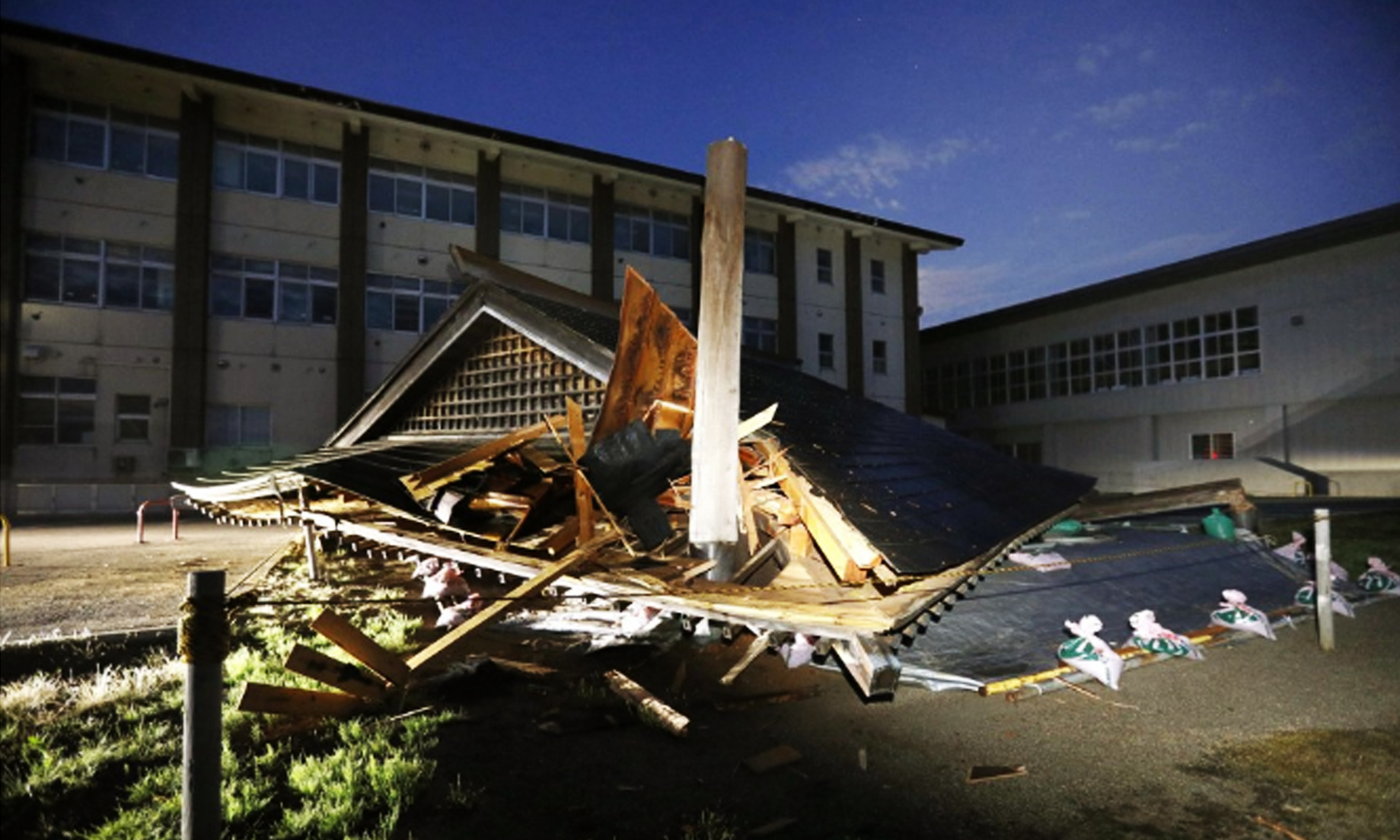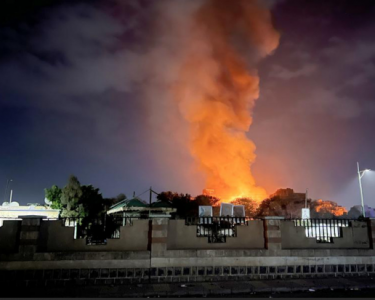TOKYO, June 19 (NNN-KYODO) – At least 15 people were injured after a magnitude-6.7 earthquake struck Japan’s northeastern region late Tuesday, authorities said Wednesday.
The Japan Meteorological Agency warned of potential landslides and collapse of houses, and said there was a chance of more quakes of similar levels hitting Yamagata and Niigata prefectures over the following week. It also forecast rain in part of the region on Wednesday.
Nine people were injured in Yamagata, four in Niigata, and one each in Miyagi and Ishikawa prefectures, the Fire and Disaster Management Agency said.
East Japan Railway Co. said the quake caused some delays to its bullet train services Tuesday, affecting around 10,000 people. It began Wednesday’s services normally.
Airlines said the earthquake will not affect flights to and from the affected region Wednesday.
The epicenter of the quake, which occurred at around 10:22 p.m. at a depth of about 14 kilometers, was off Yamagata Prefecture, about 50 kilometers southwest of the city of Sakata, the agency said. A tsunami warning was issued, but it was lifted for all coastal areas at 1:02 a.m. on Wednesday.
The shortest distance from the epicenter was about 6 to 7 km from the coast of Tsuruoka in the prefecture, according to an official at the agency. The quake registered upper 6 on the Japanese seismic intensity scale of 7 in Murakami in Niigata Prefecture, forcing thousands in the city and its neighboring municipalities to take shelter at evacuation centers.
There were some reports of landslides and bumps in roads in the city.



“It was a shake I had never felt in my life,” said a male official at the city, who was sleeping with his child at the time, adding, “At first there was a vertical shake that pushed me up from the bottom, then I felt that the jolt lasted about a minute.”
It was the most powerful temblor in Japan since last Sept. 6, when a deadly quake registering 7 on the intensity scale rocked the town of Atsuma in Hokkaido.
The latest quake registered lower 6 in Tsuruoka and lower 5 in cities including Yurihonjo in Akita Prefecture, Sakata in Yamagata, and Nagaoka and Kashiwazaki in Niigata.
The Japan Meteorological Agency said a tsunami of about 10 centimeters approached the coast of the city of Niigata six minutes after midnight on Wednesday after smaller waves were observed earlier in other areas, including Awashima Island and Sakata.
Chief Cabinet Secretary Yoshihide Suga, who entered the prime minister’s office after 10:40 p.m., said at an urgent press conference he had been informed there were no problems at any of the nuclear plants in Japan.

People gather at a junior high school gymnasium, which serves as an evacuation site, in Murakami, Niigata Prefecture

The top government spokesman added there were no initial reports of serious injuries, major damage to the region’s infrastructure or fires.
Prime Minister Shinzo Abe also went to his office following the quake and told reporters that the government will be on “maximum alert” and provide all necessary information in a timely manner.
The agency cautioned that a quake with about the same intensity could occur in the areas over the next week or so.
At one point, electricity was cut at nearly 10,000 homes in Niigata and Yamagata prefectures, according to Tohoku Electric Power Co.
East Japan Railway Co. said it temporarily suspended Tohoku, Yamagata, Akita and Joetsu bullet train services, while some highways in the region were closed to traffic.

A tunnel is closed due to fallen rocks in Murakami, Niigata Prefecture

The coastal region facing the Sea of Japan from Hokkaido to Niigata Prefecture has experienced similar big earthquakes in the past.
Shinji Toda, a professor of seismic geology at Tohoku University said, “Active faults are concentrated (around the area hit by the latest earthquake) and some of them likely moved.”
Toda pointed out that there are similarities in scale and mechanism between Tuesday’s quake and one that rocked Niigata in 2007.
Koshun Yamaoka, a seismology professor at Nagoya University, also noted, “It’s an area prone to earthquakes.”
NNN-KYODO






